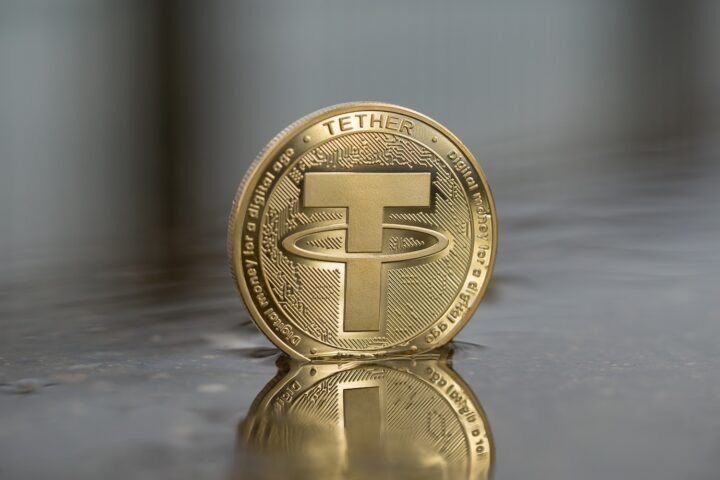Paytm founder, Vijay Shekhar Sharma, recently expressed his concerns about the potential consequences of advanced AI systems, including the disempowerment and even extinction of humanity.
He took to Twitter to share his worries, referencing a blog post by OpenAI.
Sharma highlighted some alarming findings from the OpenAI blog post, stating that he is genuinely concerned about the power that certain individuals and countries have already accumulated.
He drew attention to a specific claim in the post that suggested the development of such systems could lead to the disempowerment and extinction of humanity in less than seven years.
READ MORE: ZachXBT’s Research Cited in $3.1 Million NFT Rug Pull Lawsuit Against Boneheads
The blog post, titled “Introducing Superalignment,” discusses the need for scientific and technical breakthroughs to ensure control over AI systems that could surpass human intelligence.
OpenAI is actively dedicating significant computing power and has formed a team led by Ilya Sutskever and Jan Leike to address this issue.
While the arrival of superintelligence may still seem distant, OpenAI believes it could become a reality within this decade.
The post emphasizes the importance of managing the risks associated with superintelligence through new governance institutions and aligning AI systems with human intent.
Current AI alignment techniques rely on human supervision, particularly reinforcement learning from human feedback.
However, these techniques may not be sufficient to align superintelligent AI systems that exceed human capabilities.
OpenAI asserts that new scientific and technical breakthroughs are necessary to tackle this challenge effectively.
OpenAI plans to build an automated alignment researcher operating at a human-level intelligence to address the issue.
They intend to leverage substantial computing resources to scale their efforts and align superintelligence.
This process involves developing scalable training methods, validating models, and stress-testing the alignment pipeline.
Recognizing that research priorities will evolve, OpenAI aims to provide more details about their roadmap in the future.
They are in the process of assembling a team of leading machine learning researchers and engineers dedicated to addressing the challenge of superintelligence alignment.
OpenAI emphasizes that their work on superintelligence alignment is complementary to their ongoing efforts to improve the safety of existing AI models and address other risks associated with AI.
The concerns raised by Vijay Shekhar Sharma and the findings presented in the OpenAI blog post highlight the need for careful consideration and proactive measures to ensure the responsible development and deployment of advanced AI systems.
While the potential benefits of AI are vast, it is crucial to navigate the risks associated with its exponential growth and mitigate any potential threats to humanity.
In a recent Twitter thread, investor Luke Broyles predicts Bitcoin (BTC) could engulf future prosperity gains, leaving non-investors behind.
He foresees BTC becoming society’s base money due to its key attribute— a fixed, immutable supply, a feature that makes it a future-proof asset.
Broyles argues that while technological innovations, including artificial intelligence (AI), will drive prices down, and nations will continue to print currency to maintain credit markets and raise prices, BTC’s emission will remain unchanging.
READ MORE: Galaxy Digital CEO Mike Novogratz Considering Relocating Business Away From the US
Consequently, even minimal exposure to Bitcoin would be vastly different from having none.
“We have less in common with the future than the past… Bitcoin is already trading for hundreds of millions of political currency units in several nations.
But the actual big deal is that all future innovations’ prosperity gains will pour into society’s base money – BTC,” Broyles explained.
He insists it is vital for individuals to invest, or “get off zero”. Comparing Bitcoin to “digital gold”, he said, is like calling a locomotive an “iron horse”.
This view echoes the opinion of Arthur Hayes, ex-CEO of BitMEX, a crypto derivatives exchange.
Hayes suggested AI will naturally select BTC as its financial backbone because of its distinctive characteristics, leading to a potential price surge past $750,000 per BTC.
The competition for the remaining Bitcoin supply has likely already begun.
According to Broyles, Bitcoin’s liquidity reached its apex during the 2020 cross-market crash and won’t ever revert.
The announcement of a Bitcoin spot-based exchange-traded fund (ETF) filing by BlackRock, the world’s biggest asset manager, boosted US Bitcoin activity. Glassnode, an on-chain analytics firm, observed that the US appears to be reconsidering its own Bitcoin exposure.
“Following the Blackrock Bitcoin ETF request announcement on June 15th, the share of Bitcoin supply held/traded by US entities has seen a significant increase, indicating a potential inflection point in supply dominance if the trend continues,” Glassnode stated on July 8.
Since the launch of Meta’s microblogging app, Threads, scammers have wasted no time in their attempts to deceive users.
Despite the app’s growing popularity, with over 98 million sign-ups since its release on July 5, it still falls significantly short of Twitter’s estimated 450 million users.
Crypto Twitter users, including prominent figures in the industry, have already raised concerns about the presence of imposter accounts on Threads.
READ MORE: South Korean Regulator Takes Action After ‘Coin Gate’ Scandal
On July 8, Wombex Finance, a decentralized finance platform, tweeted an image of a Threads account impersonating their platform.
They warned their followers about the potential scam, as their project was not associated with Threads.
A day earlier, popular nonfungible token (NFT) influencer Leonidas issued a similar warning to their 93,000 followers.
They revealed that both they and other notable NFT accounts were being impersonated on Threads by scammers.
Leonidas took the initiative to create their own account on Threads to combat these impersonators.
Jeffrey Huang, known as Machi Big Brother on Twitter, also fell victim to impersonation.
On July 6, he shared his Threads profile, only to have another user point out the existence of an imposter account posing as his Twitter persona.
Fortunately, the mentioned Threads accounts have refrained from sharing any scam or phishing links. Instead, they have predominantly posted crypto-related content.
This serves as a reminder that scammers have long targeted Twitter as a platform for crypto phishing schemes.
One common tactic involves hacking into the accounts of well-known individuals and businesses, then posting malicious links.
These links typically aim to trick unsuspecting users into revealing their crypto exchange login credentials, crypto wallet seed phrases, or connecting their wallets to crypto-draining smart contracts.
In the first half of this year alone, Web3 security firm Beosin reported that phishing scams resulted in the theft of $108 million worth of cryptocurrencies.
As Threads gains more traction and attracts a larger user base, it is crucial for Meta to implement robust security measures to protect users from scammers.
Additionally, educating users about the risks associated with phishing scams and providing guidance on how to identify and avoid them is essential.
By taking proactive steps, both the platform and its users can work together to mitigate the threat posed by scammers in the crypto space.
Galaxy Digital CEO, Mike Novogratz, is considering relocating businesses outside the United States as the country continues its regulatory crackdown on the cryptocurrency industry.
Novogratz, an American billionaire, cautioned that many other crypto firms are also adopting similar strategies and moving away from the US.
Speaking at the Piler Sandler Global Exchange & FinTech Conference last month, he revealed their intention to relocate both personnel and companies from the US.
READ MORE: Elon Musk Fights Back Against $258 Billion Dogecoin Lawsuit
Several US-based crypto companies have already taken steps to establish their businesses in other countries.
While Novogratz believes that the US will remain an important player in the long run, he emphasized the need for the country to engage with the crypto industry and not disregard it.
He stated that for cryptocurrencies to fulfill their true potential, the US must be involved.
Given their significant role in the global economy, it is crucial to find common ground through engagement with politicians and regulators.
Presently, the regulatory landscape for crypto businesses in the United States appears bleak.
The US Securities and Exchange Commission (SEC) has intensified its scrutiny of crypto companies, filing successive lawsuits against major exchanges such as Binance and Coinbase.
The regulator alleges that these exchanges have violated numerous investor protection laws.
Specifically, the SEC claims that over 30 cryptocurrencies listed on these platforms are unregistered securities, including popular tokens like Solana, Cardano, Polygon, Cosmos, The Sandbox, Decentraland, and Axie Infinity.
Considering the uncertain regulatory environment in the US, several crypto companies have already announced their intentions to relocate overseas.
One such example is Coinbase, the largest US-based crypto exchange, which recently established a business presence in Bermuda.
Additionally, Coinbase expanded its services for customers in Singapore. Earlier this year, Coinbase CEO Brian Armstrong emphasized the need for clear regulations governing crypto, warning that without them, companies would seek refuge in offshore jurisdictions.
Gemini, another prominent US-based exchange, is seeking a license in the United Arab Emirates and has revealed plans to expand its workforce in Singapore to over 100 employees within the next year, targeting the Asian market.
Ripple, currently entangled in a legal dispute with the SEC since 2020, has also expressed its intention to relocate its business outside the US.
In light of the increasing exodus of crypto businesses from the US and the growing regulatory uncertainty, it is crucial for US regulators to establish clear and comprehensive guidelines for the industry.
Failure to do so may lead to the further proliferation of offshore havens for crypto companies, which could ultimately hinder the country’s ability to fully participate in and benefit from the cryptocurrency revolution.
Bitcoin mining company Marathon Digital attributes its 21% decline in Bitcoin mined in June to harsh weather conditions in Texas and a significant fall in transaction fees, according to a statement on July 5.
The firm’s main operations based in Texas produced 979 Bitcoin, markedly less than the previous month due to the impact of the transition from spring to summer.
National Weather Service data showed a considerable temperature increase in Texas, with an 8.4 degrees fahrenheit jump from an average of 75.6 degrees in May to 84 degrees in June.
Such changes in weather conditions have historically proven disruptive for crypto mining operations in the state.
READ MORE: Former BitMEX CEO Says Bitcoin Will Reach $760,000 as Currency of Artificial Intelligence
For instance, Riot Platforms, another crypto mining firm, experienced a temporary halt in its operations when 17,040 of its rigs went offline due to severe winter weather in February.
Further compounding Marathon Digital’s challenges, the company’s transaction fees dipped to roughly 5.1% of the total Bitcoin earnings for June, down from 11.8% in May.
This decline came despite the increased transaction fees brought about by the advent of Bitcoin Ordinals in May.
Although network congestion receded in June, Marathon Digital maintains an optimistic view regarding the long-term profitability of mining.
The recent downturn highlights the susceptibility of crypto mining operations to external factors, particularly weather conditions.
In 2022, Argo Blockchain, another crypto mining firm operating in West Texas, was forced to suspend its mining activities temporarily due to a conservation alert issued by the Electric Reliability Council of Texas.
In contrast, a July 5 report by Coin Metrics, a cryptocurrency analytics platform, revealed a bright spot for the broader industry:
Bitcoin miners accrued $184 million from transaction fees in Q2 2023, surpassing the total earnings from fees for the entirety of 2022. Despite individual setbacks, this suggests a thriving overall trend for the industry.
Bitcoin (BTC) has the potential to become the currency of choice for artificial intelligence (AI), according to Arthur Hayes, the former CEO of BitMEX.
In his recent essay titled “Massa,” Hayes argues that as fiat currencies become increasingly dysfunctional, the AI revolution will flourish, leading to a surge in BTC adoption.
Hayes predicts that the price per coin could reach $760,000 as a result.
Hayes believes that the future will witness a significant expansion of AI-related applications, making AI an integral part of everyday life.
READ MORE: Top Executives Depart Binance Amidst Legal Scrutiny and Compliance Concerns
The rapid advancements in computing power have brought us to the verge of an AI explosion that will revolutionize humanity.
Hayes cites the example of ChatGPT, which acquired 100 million monthly active users in just two months, highlighting the unprecedented pace of technological adoption.
When it comes to financial solutions for AI integration, Hayes suggests that Bitcoin, rather than a tailor-made altcoin, will be the preferred choice.
This is because AI systems are likely to perceive Bitcoin’s qualities, such as its fixed supply, digital scarcity, and status as “energy money,” as the most logical option.
AI systems are unlikely to rely on anything operated by human governments, thus making Bitcoin and gold the most suitable choices.
Hayes also outlines a potential path for Bitcoin’s price to reach $1 million.
He anticipates that the real impact of AI will be felt in approximately three years, and it could take another decade for the network value boost driven by AI alone to push BTC/USD to nearly $1 million.
Hayes emphasizes that his predictions aim to create a narrative that gains traction before the peak of what he calls “deranged growth investing” in 2025 to 2026.
Depending on the extent of investment, Bitcoin’s price could surge to $760,000 per coin.
Hayes concludes by stating that the market is most lucrative when it shifts from believing something is impossible to considering it as a possibility.
His optimistic outlook on Bitcoin’s future price is based on the expectation that the market will overvalue Bitcoin’s network growth if it sees a chance of his assumptions coming true.
Arthur Hayes is renowned for his bullish long-term perspective on Bitcoin and has previously advocated for a million-dollar price target, attributing it to the disintegration of fiat currencies.
Logan Paul has decided to not refund CryptoZoo investors, a source in the influencer’s camp told Crypto Intelligence News on Saturday.
Paul found himself under increased security after crypto YouTuber and sleuth Coffeezilla published a video about the failed crypto gaming project in late December.
In the video, Coffeezilla criticised Paul and other senior figures of the project, and he also spoke to several victims, who cumulatively lost millions of dollars as a result of the failed project.
He later promised to refund some of the investors, after his initial tactic of blaming senior advisors failed.
READ MORE: Elon Musk Fights Back Against $258 Billion Dogecoin Lawsuit
However, over six months later, Paul is yet to have paid a dime in compensation, nor has he provided an update on the situation or how exactly investors can claim compensation.
Coffeezilla revealed in a recent video that Paul had been ignoring his messages regarding CryptoZoo, with only his lawyers responding to his requests for comment.
“Paul has not paid back his victims. He hasn’t talked about it since he first announced he was going to pay them back. And what’s worst of all, he doesn’t seem to have a plan in place to refund anyone,” he said.
A source with ties to Paul and the now-defunct project has now told Crypto Intelligence News that the American influencer has changed his mind about compensating investors.
Specifically, the source said that Paul was unhappy with the response he received online after he announced his intention of compensating investors from his own pocket, feeling that he didn’t receive enough credit.
Crypto Intelligence News has reached out to Logan Paul’s team for comment, but has not received a reply as of publishing this story.
Elon Musk and Tesla are fighting back against allegations of conflicts of interest in a $258 billion lawsuit related to Dogecoin.
Lawyers representing Musk and Tesla recently filed a response in a United States district court, requesting the dismissal of a motion that sought to have them sanctioned over alleged conflicts of interest.
The motion, filed by Evan Spencer, a lawyer representing the plaintiffs in the case against Musk, claimed that the defendants’ legal team was acting as “yes men” and had a conflict of interest by representing both Musk and Tesla.
READ MORE: Top Executives Depart Binance Amidst Legal Scrutiny and Compliance Concerns
Spencer argued that the lawyers’ true loyalty lay with Musk alone.
In their response, Musk and Tesla’s legal team firmly rejected Spencer’s allegations, referring to the motion as “unsubstantiated” and “frivolous.”
They cited New York law, stating that there is no conflict of interest when legal teams represent both company officers and the companies themselves, unless they are legal adversaries.
The response further criticized Spencer’s track record, accusing him of a history of filing frivolous motions to delay court procedures.
The defense team denied allegations that they leaked a letter disparaging Spencer’s behavior to the New York Post, instead claiming that it was Spencer who introduced the letter to the jury pool by publicly docketing and introducing it through the motion.
The legal battle between Musk, Tesla, and the plaintiffs revolves around allegations of Musk’s involvement in an illegal racketeering scheme tied to Dogecoin, a cryptocurrency currently valued at $0.07 per coin.
The plaintiffs are seeking a staggering $258 billion in damages.
Musk and Tesla’s lawyers characterized Spencer’s motion as an abuse of process, asserting that it wasted the court’s time and insulted the credibility of their legal team.
They emphasized their dedication to upholding the principles of the legal profession and expressed their commitment to vigorously defending their clients against the allegations.
As the case progresses, both sides will present their arguments and evidence to the court.
The judge will ultimately decide whether the motion to have Musk and Tesla’s legal team sanctioned holds merit.
The outcome of this lawsuit will have significant implications for Musk, Tesla, and the cryptocurrency industry as a whole.
Ryan Wyatt, who has served as president of Polygon Labs for over a year, has announced his decision to step down from his current role and transition into an advisory position within the company.
Wyatt revealed his plans to leave Polygon by the end of July but expressed his intention to remain involved in the crypto space by continuing to provide guidance and advice to the firm.
Taking on the mantle of the new CEO will be Marc Boiron, Polygon’s chief legal officer and former chief legal officer of dYdX.
READ MORE: BarnBridge DAO Halts Operations Amidst SEC Investigation
Meanwhile, Rebecca Rettig, currently serving as Polygon’s chief policy officer, will assume the role of chief legal officer following Boiron’s departure.
Rettig’s expertise in legal matters and her recent appointment by Caroline Pham of the United States Commodity Futures Trading Commission (CFTC) to the CFTC’s Global Markets Advisory Committee’s Subcommittee on Global Market Structure, Technical Issues, and Digital Asset Markets further bolsters her qualifications for the position.
This change in leadership comes at a pivotal time for Polygon, as the platform has been diligently working on a series of upgrades known as “Polygon 2.0” with the aim of establishing the “Value Layer” of the internet.
One of the key milestones in this endeavor is the implementation of “decentralized governance,” which Polygon plans to achieve by July 17.
These upgrades and advancements will contribute to Polygon’s growth and solidify its position in the blockchain and cryptocurrency industry.
Polygon has already achieved significant milestones, as demonstrated by its ascent to become the second-largest blockchain gaming network in terms of the number of unique active wallets, surpassing Hive.
The growing popularity of the platform and its underlying cryptocurrency, Polygon (MATIC), is a testament to its success.
As of the time of this article’s publication, the price of Polygon (MATIC) stood at $0.6804, signifying its market value.
With the upcoming changes in leadership and the continued pursuit of Polygon 2.0, the future of Polygon Labs looks promising, poised to make further advancements in the realm of decentralized finance and beyond.
Bitcoin Mining Stocks Outperform BTC with Impressive Gains, but Potential Risks Loom
Bitcoin mining companies have significantly outperformed Bitcoin itself amid the recent bullish price action in the cryptocurrency market.
The top nine publicly traded Bitcoin mining firms have seen an average year-to-date stock price gain of 257.14% in 2023, nearly three times higher than Bitcoin’s gain in the same period.
The leveraged beta effect explains the higher gains of mining stocks.
READ MORE: Crypto Investor Discovers $322,000 Worth of Ether (ETH)
When Bitcoin experiences an upward trend, these stocks tend to outperform, while they face greater downside risk during Bitcoin slumps.
Consequently, the performance of Bitcoin will remain a crucial factor in determining the direction of mining stocks.
While miners are positioning themselves for the long term by expanding their operations and purchasing more machines, the accumulation levels have not matched those of previous bull markets.
This suggests that the upward trend in mining stocks may stall in the medium term.
Recent developments within the mining sector have added to positive sentiments and long-term value.
Some mining companies have made significant moves, such as Hut 8 Mining merging with US Bitcoin Corp, increasing its total hash rate to become the third-largest public mining entity in the US.
Cleanspark also invested to increase its hash rate, and Riot Blockchain entered a deal with mining hardware manufacturer MicroBT to double its hash rate capacity by 2024.
However, on-chain data reveals that miners have been selling a significant portion of their holdings, which could indicate an impending downturn.
Additionally, some mining stocks, like Marathon Digital Holdings, Riot Blockchain, and Cipher Mining, have attracted a substantial amount of short interest, possibly due to excessive debt and stock dilution, which can impact existing shareholders’ profitability.
While mining profits have improved, miners continue to sell their Bitcoin holdings.
The network’s total hash rate reached a new all-time high initially but has since dropped due to heat waves in Texas, where some mining farms are located.
The profitability of running miners has increased with Bitcoin’s price surpassing $30,000, but companies with operations in Texas may face losses due to the adverse climate conditions.
Despite revenue improvements, miners have been allocating funds to expansion and operation costs, suggesting that a full-fledged crypto bull market is yet to materialize.
The expansion plans of mining companies and the decline in on-chain miner holdings indicate a potential sideways price action or a correction in mining stocks if the BTC price drops.












